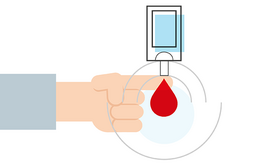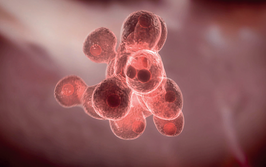Pharmtastic Voyage
Scientists develop a microscopic “submarine” that neutralizes gastricacid for fuel to safely deliver drugs to the stomach
In the 1960’s science fiction movie, Fantastic Voyage, Dr Jan Benes is left comatose with a life-threatening blood clot after a Soviet assassination attempt. Captain Bill Owens and his crew have only 60 minutes to board a miniaturized submarine and make their way to the clot, operate, and exit the body before they are returned to normal size, killing the unfortunate Benes.
Since its 1966 release, Fantastic Voyage has been widely celebrated, satirized, and now – with a new device developed by Jinxing Li and his team from the Department of Nanoengineering, University of California San Diego – imitated. Although there’s no “atomic miniaturization” involved, Li’s team have developed a microscopic “submarine” that can speed through the stomach using gastric acid for fuel (while simultaneously neutralizing it) and release cargo precisely at the desired pH. The “submarine” is actually a proton-driven, biocompatible micromotor with a pH-dependent polymer coating that can be loaded with drugs.
“Fantastic Voyage features a microscopic submarine that travels inside the human body to treat life-threatening issues,” says Li. “We’re aiming to apply our micro/nanomachines to drug delivery, detoxification and precision surgery.”
A number of pH-sensitive compounds are vulnerable to gastric acid – including protein-based drugs and some antibiotics. An enteric coating can usually do the job of preventing degradation in the stomach, but for drugs that need to be activated in the stomach, for instance to treat stomach ulcers, proton pump inhibitors are usually needed to block gastric acid production. When used over longer periods, these can cause some side effects, including headaches, diarrhea, fatigue and, in some severe cases, rhabdomyolysis, a potentially life-threatening muscle disease.
Li’s micromotors are microscopic spheres consisting of a magnesium core, which reacts with gastric acid to generate bubbles for propulsion. This process also neutralizes the stomach pH spontaneously (1). “Such motor-induced neutralization of the stomach fluid further triggers the autonomous payload release from the pH-sensitive polymer coating,” says Li.
Where proton pump inhibitors suppress acid in the stomach, the micromotors alter the local environment without blocking the function of the proton pumps. “This approach hardly interferes with the function of the stomach and therefore completely eliminates the side effects associated with proton pump inhibitors,” says Li.
Li hopes that the technology will help improve treatment efficiency since the propulsion of the micromotor allows it to penetrate the gastric mucosa, which increases the amount of time that the drug is retained in the stomach.
The journey continues as Li’s team turn their attention to loading real therapeutic agents to treat stomach infections.
- J Li et al., “Micromotors Spontaneously Neutralize Gastric Acid for pH-Responsive Payload Release”, Angewandte Chemie International Edition, (2017).

Over the course of my Biomedical Sciences degree it dawned on me that my goal of becoming a scientist didn’t quite mesh with my lack of affinity for lab work. Thinking on my decision to pursue biology rather than English at age 15 – despite an aptitude for the latter – I realized that science writing was a way to combine what I loved with what I was good at.
From there I set out to gather as much freelancing experience as I could, spending 2 years developing scientific content for International Innovation, before completing an MSc in Science Communication. After gaining invaluable experience in supporting the communications efforts of CERN and IN-PART, I joined Texere – where I am focused on producing consistently engaging, cutting-edge and innovative content for our specialist audiences around the world.


















